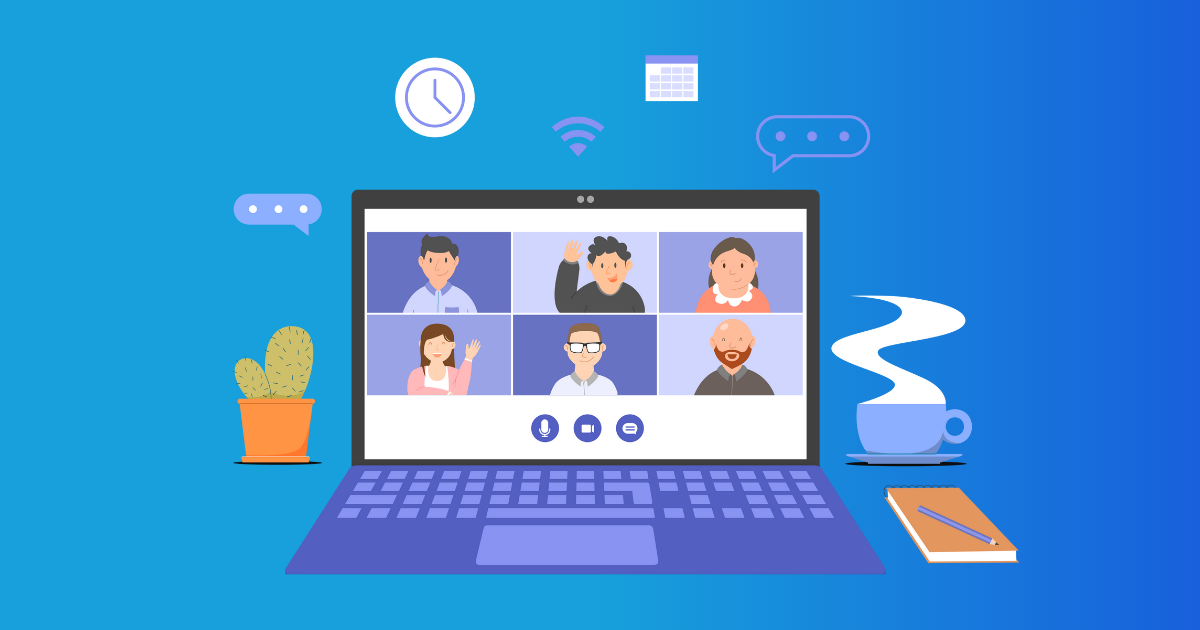Table of Contents
- What Is Jitsi and Why Is It Important for Telemedicine?
- How Jitsi Works for Telemedicine
- Understanding HIPAA Compliance and Jitsi
- Is Jitsi HIPAA Compliant?
- Practical Steps for Ensuring HIPAA Compliance with Jitsi
- Real-World Use Cases of Jitsi in Telemedicine
- Case Study: Community Health Clinic
- Case Study: Mental Health Teletherapy Provider
- Step-by-Step Guide: Setting Up Secure Healthcare Video Calls with Jitsi
- Step 1: Choose Your Hosting Method
- Step 2: Set Up Your Jitsi Server (If Self-Hosting)
- Step 3: Configure Security Settings
- Step 4: Test End-to-End Encryption
- Step 5: Educate Staff and Patients
- Advantages of Using Jitsi for Secure Telemedicine
- Potential Challenges and How to Address Them
- Conclusion
Secure communication is critical in telemedicine. When healthcare providers and patients connect online, they need a video conferencing platform that is easy to use, reliable, and, most importantly, protects sensitive health data. This is where Jitsi telemedicine comes in.
Jitsi is an open-source video conferencing platform that supports secure video conferencing healthcare needs. It allows clinicians to conduct virtual visits while maintaining privacy and compliance with healthcare regulations like HIPAA. This article breaks down the role of Jitsi in telemedicine platforms, how it ensures security, and practical steps to use it safely in your healthcare practice.
What Is Jitsi and Why Is It Important for Telemedicine?
Jitsi started as a free, open-source software project focused on video and voice calls over the internet. Its flexibility and transparency set it apart from proprietary platforms. For telemedicine, Jitsi offers a way to hold healthcare video calls that are encrypted and customizable.
Since telemedicine has strict requirements around patient privacy and legal compliance, platforms must meet certain standards. Jitsi’s architecture allows healthcare providers to host their own servers, giving full control over data and security settings.
How Jitsi Works for Telemedicine
- Open Source: Anyone can inspect the source code or modify it to fit healthcare needs.
- Encryption: Jitsi supports encryption methods that protect calls from eavesdropping.
- Self-Hosting: Providers can run their own Jitsi servers for full data ownership, enhancing trust.
- Multi-Platform Access: Patients and providers can join calls from browsers, desktops, or mobile devices without installing complex software.
- Scalability: Jitsi can handle many users simultaneously, useful for group consultations or webinars.
By supporting these features, Jitsi telemedicine fits well for healthcare professionals looking for secure, cost-effective video communication.
Understanding HIPAA Compliance and Jitsi
One of the biggest concerns in healthcare video calls is meeting the Health Insurance Portability and Accountability Act (HIPAA) requirements. HIPAA sets strict rules around how protected health information (PHI) is handled, requiring safeguards against unauthorized access.
Is Jitsi HIPAA Compliant?
Jitsi itself is just the software and does not come with inherently certified HIPAA compliance. Compliance depends largely on how the software is deployed.
- Self-Hosting: If you run your own Jitsi server behind secured firewalls with encrypted traffic and access controls, you can configure it to meet HIPAA’s administrative, physical, and technical safeguards.
- End-to-End Encryption: Jitsi supports encryption but full end-to-end encryption is still experimental. This means you must carefully assess the encryption settings to minimize risks.
- Business Associate Agreement (BAA): For telemedicine practices using cloud-based solutions, HIPAA requires signing a BAA with the service provider. If you self-host Jitsi, you control your server and data, reducing dependence on third-party BAAs.
Practical Steps for Ensuring HIPAA Compliance with Jitsi
- Use a Private Jitsi Server: Host Jitsi on your infrastructure or a trusted HIPAA-compliant cloud provider.
- Enable Encryption: Use transport layer security (TLS) for signaling and Secure Real-Time Transport Protocol (SRTP) for media streams.
- Control Access: Require meeting passwords, use authentication, and limit participant entry.
- Audit and Logging: Keep logs for session access where possible to meet auditing needs.
- Staff Training: Train healthcare staff on how to use the platform securely.
By taking these steps, healthcare providers can align Jitsi telemedicine usage with HIPAA mandates, ensuring patient data remains protected during remote visits.
Real-World Use Cases of Jitsi in Telemedicine
Understanding theory is good, but seeing how Jitsi works in real settings helps clarify its role.
Case Study: Community Health Clinic
A mid-sized community health clinic needed a video solution during the COVID-19 pandemic to continue patient visits. They wanted something affordable and secure. They:
- Set up a dedicated Jitsi server on their in-house data center.
- Used meeting rooms protected by unique access codes.
- Trained staff to schedule appointments with links accessible only to their patients.
- Managed encryption settings to ensure call privacy.
Within weeks, their telemedicine visits grew 200%, with positive patient feedback about the ease of joining calls without installing apps. Most importantly, they met their HIPAA obligations by controlling all data and access.
Case Study: Mental Health Teletherapy Provider
A teletherapy company switched to Jitsi telemedicine so therapists could host confidential sessions with clients. Key practices included:
- Hosting Jitsi on a HIPAA-compliant cloud provider.
- Regularly updating software to fix security vulnerabilities.
- Using two-factor authentication (2FA) for therapists joining calls.
- Configuring Jitsi to minimize data retention and disable recording unless explicitly authorized.
This setup gave therapists confidence in their virtual meetings, preserving therapeutic trust while maintaining compliance.
Step-by-Step Guide: Setting Up Secure Healthcare Video Calls with Jitsi
Here’s how any healthcare professional or organization can get started with secure video conferencing healthcare using Jitsi.
Step 1: Choose Your Hosting Method
You have two main options:
- Use the Public Jitsi Meet server (meet.jit.si): Easy but less control, and lacks HIPAA guarantees.
- Host your own Jitsi server: Requires technical skills but offers full control and better security compliance.
Step 2: Set Up Your Jitsi Server (If Self-Hosting)
- Provision a secure virtual private server (VPS) or cloud instance.
- Install and configure the Jitsi Meet application according to the official documentation.
- Configure a valid SSL certificate to enable HTTPS and encrypted signaling.
Step 3: Configure Security Settings
- Enable mandatory password-protected rooms or link-based authenticated access.
- Restrict who can join meetings.
- Enable TLS and SRTP to encrypt calls.
Step 4: Test End-to-End Encryption
- Enable and verify Jitsi’s experimental end-to-end encryption feature if available.
- Train staff on best practices for sharing meeting links securely.
Step 5: Educate Staff and Patients
- Share clear instructions on how to join calls.
- Provide tips for keeping devices and networks secure.
Advantages of Using Jitsi for Secure Telemedicine
- Cost Efficiency: Jitsi is free and open-source, reducing software subscription costs for clinics.
- Customizability: You can tailor the platform’s look and functionality to healthcare needs.
- Privacy and Control: You own data by self-hosting, limiting third-party exposure.
- No User Limits: Scale calls without worrying about expensive user tiers.
- Easy Access: Patients join from browsers or apps without complicated setups.
These benefits make Jitsi an attractive option, especially for smaller or resource-constrained healthcare providers looking to modernize telemedicine.
Potential Challenges and How to Address Them
- Technical Know-How: Setting up and maintaining a secure server requires IT expertise.
- End-to-End Encryption Maturity: Currently, full end-to-end encryption is still under development, meaning some risk remains.
- Support and Updates: Unlike commercial platforms, ongoing maintenance depends on your team.
- Compliance Responsibility: As a self-hosted platform, your organization is responsible for meeting HIPAA and other legal standards.
To manage these, consider partnering with IT specialists familiar with healthcare regulations and open-source telemedicine platforms.
Conclusion
Jitsi telemedicine provides a valuable option for healthcare providers wanting secure video conferencing healthcare solutions that they can control. When properly configured, Jitsi supports HIPAA compliance and privacy-critical healthcare video calls.
By self-hosting, enabling strong encryption, and following security best practices, healthcare professionals can protect patient information while delivering convenient remote care. Jitsi’s flexibility and open-source nature offer cost-effective, scalable, and reliable telemedicine capabilities.
Ready to bring secure telemedicine video calls to your practice? Start by evaluating your current setup and consider setting up a private Jitsi instance. If you need help configuring a HIPAA-compliant system, connect with IT professionals experienced in healthcare security.
For more insights and tutorials on secure healthcare technology, stay tuned for updates and practical guides.
FAQ
Jitsi telemedicine uses the open-source Jitsi video conferencing platform adapted for secure healthcare calls, allowing encrypted, reliable doctor-patient interactions online.
Jitsi supports HIPAA compliance when properly configured with secure servers and access controls, making it suitable for protected health information in telemedicine.
Providers can set up secure calls by hosting a private Jitsi server, enabling end-to-end encryption, restricting access, and following best practices for healthcare data security.
Jitsi offers cost-effective, flexible, and customizable video conferencing with strong security features, including no user limits and open-source transparency.
Challenges include managing HIPAA compliance on your own, ensuring end-to-end encryption is fully enabled, and handling technical setup compared to commercial options.


